![]() Other Performances Sonja's c.v. A tour of Sonja's work via thumbnail images
Other Performances Sonja's c.v. A tour of Sonja's work via thumbnail images
|
EMCO, a London-based performance artist, had the idea to create a festival of performance as part of the annual Bermondsey Carnival in Southwark Park, London, U.K., and invited me to participate.
InterAction evolved into a series of performances and installations by 25 European-based artists in and around the park and the Cafe Gallery over a five-day period in May 1999. EMCO wanted a program of performances in a marquee aimed at a larger audience, to make the festival more visible and accessible to a general audience. Our ideas for 'The Living Creature' performance were more of a durational nature: perfect for the rose gardens but not for inside a tent in the midst of a noisy carnival. So we devised the 'Tabula Rasa' performances in response to EMCO's request. | ||||||||||||||||||||||||||||||||||||||||||||||||||||||||||||||||||||||||||||||||||||||||||||||||||
|
Two one hour performances on May 29th and May 30th 1999 The participants were: Sarah Buist, Geeske Harting, Wim van Egmond, Sonja van Kerkhoff, Jessy Rahman, Anna van Stuijvenberg & Jacqueline Wassen. |
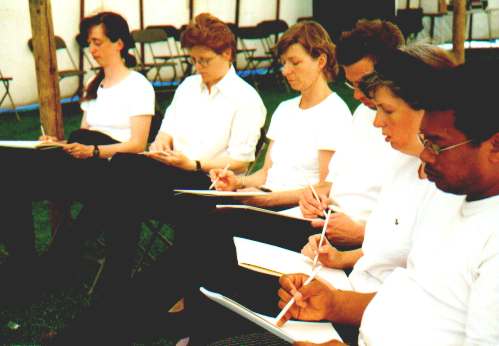
|
|
We walked one by one into the space that had been the 'stage' for the previous performance and placed a row of chairs in a half-circle from the centre to the side. Then we each sat with a drawing pad and a pen and proceeded to draw the audience. |
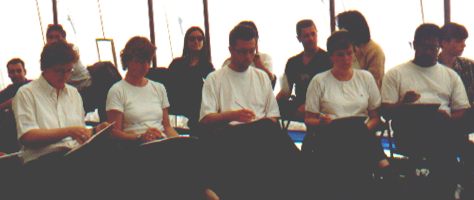
After some silence, some laughter; after the expectation that something would happen, passed, people stood up and either walked away or walked around us to see what we were drawing. |
left to right: Anna, Sarah, Wim, Geeske and Jessy. | ||||||||||||||||||||||||||||||||||||||||||||||||||||||||||||||||||||||||||||||||||||||||||||||||||
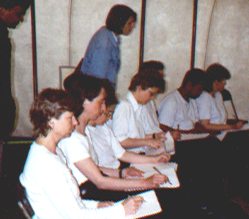
Sitting, concentrating on what went by and drawing, was what we did. We were reversing the usual audience-performer relationship as well as dispersing the binary passive-active relationship. The audience watched us. We observed them. |
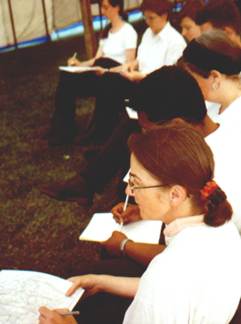
|
front to back: Sonja, Jessy, Geeske, Wim, Sarah, Anna, and Jaqueline. | |||||||||||||||||||||||||||||||||||||||||||||||||||||||||
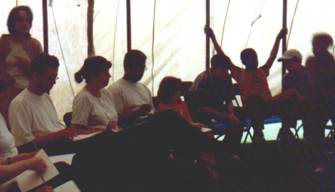
|
And some joined in. These boys sat next to us and asked if they could draw so I gave four of them a pad and pencil.
Initially I wasn't sure how to respond to the boys because they didn't seem to be really interested in participating, but I was wrong. Most did sit and draw and one remained for about 15 or 20 minutes to draw what he saw in front of him. | ||||||||||||||||||||||||||||||||||||||||||||||||||||||||||||||||||||||||||||||||||||||||||||||||||
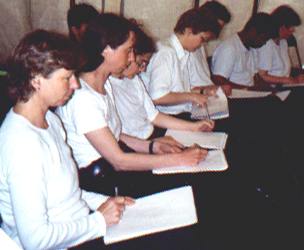
|
Generally the public silently walked around us, observing us, observing them. Our intention was not to interact but to reverse the gaze (-as artists doing our job). Our pages, our 'Tabula Rasa', became filled with images of the public who passed before us. |